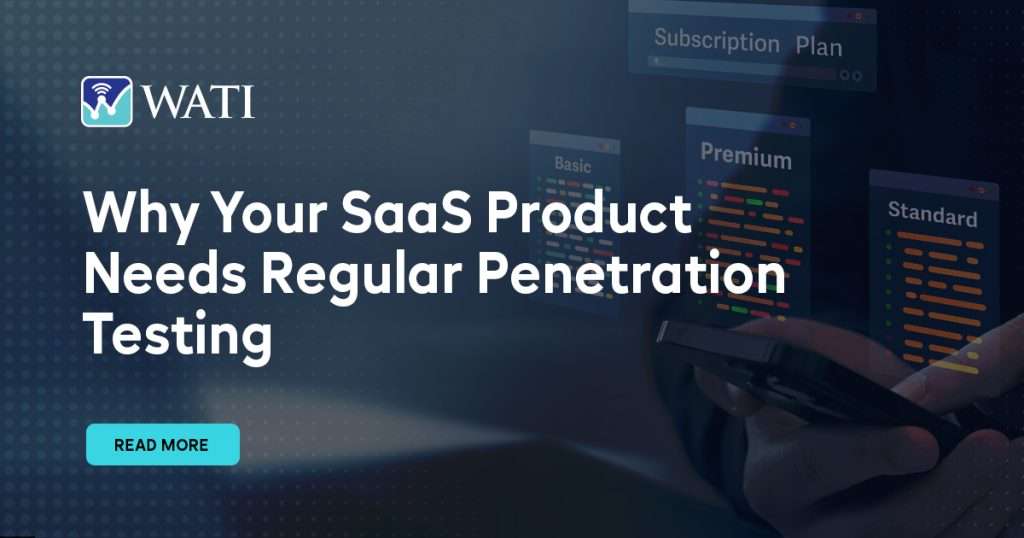Web applications have become indispensable for businesses, enabling them to interact with customers and streamline operations. However, this growing reliance on technology also exposes organizations to significant cybersecurity risks. As cybercriminals become more adept at exploiting vulnerabilities, businesses must take proactive measures to protect their digital assets. Vulnerability Assessment and Penetration Testing (VAPT) plays a critical role in this defense strategy, offering insights that can help organizations strengthen their web application security and mitigate potential threats.
The Growing Importance of Web Application Security
As cyber threats continue to evolve, businesses must prioritize web application security. According to recent statistics, approximately 43% of cyberattacks target small businesses, with web applications being a primary entry point for attackers. Breaches can result in data loss, financial loss, legal penalties, and reputational damage. Thus, implementing robust VAPT strategies is not just an option; it is a necessity.
Understanding Web Application VAPT
Vulnerability Assessment and Penetration Testing (VAPT) is a comprehensive approach to identifying and addressing security vulnerabilities in web applications. It involves two primary processes:
- Vulnerability Assessment: This is the systematic review of security weaknesses within the web application. It identifies vulnerabilities that could be exploited by attackers.
- Penetration Testing: Often referred to as ethical hacking, penetration testing involves simulating cyberattacks to exploit vulnerabilities identified during the assessment. This helps in understanding how these vulnerabilities can be exploited and the potential impact on the business.
Key Reasons Why Web Application VAPT is Essential
1. Proactive Defense Mechanism
The primary benefit of VAPT is its proactive approach. Instead of waiting for a cyberattack to reveal weaknesses, VAPT allows businesses to identify and fix vulnerabilities before they can be exploited. This proactive defense mechanism is vital in maintaining the integrity and security of web applications.
2. Protecting Sensitive Data
Web applications often handle sensitive data, including personal information, financial details, and proprietary business data. A breach can lead to significant financial loss, legal repercussions, and damage to the company’s reputation. Web Application VAPT helps in securing this data by identifying and mitigating potential risks, ensuring that sensitive information remains protected.
3. Compliance with Regulations
Many industries are subject to strict data protection regulations, such as GDPR, HIPAA, and PCI-DSS. Regular VAPT assessments help businesses ensure compliance with these regulations, avoiding hefty fines and legal issues. It demonstrates a commitment to data security and regulatory adherence, enhancing trust among customers and stakeholders.
4. Maintaining Customer Trust
Trust is a critical factor in customer relationships. Customers expect their data to be handled securely. Any security breach can severely damage this trust, leading to customer churn and loss of business. By implementing regular VAPT, businesses can reassure their customers that their data is secure, thereby maintaining and even enhancing customer trust.
Common Vulnerabilities Addressed by VAPT
Web applications are susceptible to a variety of vulnerabilities, including:
- SQL Injection: Attackers can manipulate backend databases through unfiltered user inputs.
- Cross-Site Scripting (XSS): Malicious scripts can be injected into web pages viewed by users.
- Cross-Site Request Forgery (CSRF): An attacker tricks a user into executing unwanted actions on a different site.
- Insecure Direct Object References: Users gain unauthorized access to restricted files or data.
By identifying these vulnerabilities through web application VAPT, businesses can take targeted actions to fortify their applications against potential threats.
Key Steps in Web Application VAPT
1. Planning and Preparation
The first step involves understanding the scope of the assessment, identifying critical assets, and defining the goals of the VAPT. This stage sets the foundation for a comprehensive and effective assessment.
2. Vulnerability Assessment
Using automated tools and manual techniques, security experts identify potential vulnerabilities in the web application. This includes weaknesses in the code, configuration issues, and potential entry points for attackers.
3. Penetration Testing
Ethical hackers simulate real-world cyberattacks to exploit the identified vulnerabilities. This helps in understanding the potential impact of these vulnerabilities and the effectiveness of existing security measures.
4. Analysis and Reporting
The findings from the vulnerability assessment and penetration testing are analyzed, and a detailed report is generated. This report highlights the identified vulnerabilities, the potential impact, and recommended remediation measures.
5. Remediation and Re-testing
Based on the report, businesses implement the recommended remediation measures to fix the identified vulnerabilities. After remediation, re-testing is conducted to ensure that the vulnerabilities have been effectively addressed.
The Evolving Threat Landscape
The cyber threat landscape is constantly evolving, with attackers becoming more sophisticated and persistent. Regular VAPT assessments are crucial in keeping up with these evolving threats. They help in identifying new vulnerabilities that may emerge due to changes in the web application, updates, or new security threats.
Cost-Effectiveness of VAPT
Investing in regular VAPT assessments can save businesses significant amounts of money in the long run. The cost of a data breach can reach millions when considering potential legal fees, regulatory fines, and the impact on brand reputation. In contrast, the cost of conducting VAPT is relatively low compared to the potential financial fallout of a breach. By treating VAPT as a preventative measure rather than an expense, businesses can protect their assets and ensure long-term sustainability.
Best Practices for Effective VAPT
1. Regular Assessments
Security is an ongoing process. Regular VAPT assessments ensure that new vulnerabilities are identified and addressed promptly. Depending on the complexity of the web application, these assessments should be conducted quarterly or bi-annually.
2. Skilled Security Experts
VAPT requires a combination of automated tools and skilled security experts. Ensure that the team conducting the VAPT has the necessary expertise and experience to identify and address vulnerabilities effectively.
3. Comprehensive Scope
The scope of the VAPT should be comprehensive, covering all aspects of the web application, including the code, configuration, and third-party integrations. A narrow scope may miss critical vulnerabilities, undermining the effectiveness of the assessment.
4. Integration with Development Lifecycle
Integrate VAPT into the development lifecycle of web applications. Conduct security assessments during the development phase to identify and fix vulnerabilities early, reducing the risk of security breaches post-deployment.
Next Steps for Businesses
If you’re ready to enhance your cybersecurity strategy with Web Application VAPT, here are some steps to consider:
1. Assess Your Needs: Identify which applications need VAPT and set clear objectives.
2. Choose the Right Provider: Look for a cybersecurity company with a strong track record in VAPT services.
3. Schedule Regular Assessments: Make VAPT a part of your regular security reviews.
For more information on VAPT and how it can benefit your business, reach out to our experts for a consultation.
Conclusion
In conclusion, Web Application VAPT is a crucial component of a robust cybersecurity strategy. It provides a proactive defense mechanism, protects sensitive data, ensures regulatory compliance, and maintains customer trust. As the cyber threat landscape continues to evolve, regular VAPT assessments will help businesses stay ahead of potential threats and safeguard their web applications effectively.
By integrating VAPT into your cybersecurity framework, you demonstrate a commitment to security, build trust with your customers, and protect your business from the ever-increasing threat of cyberattacks. Don’t wait for a breach to act—implement regular VAPT assessments and secure your web applications today.
Frequently Asked Questions (FAQs)
Web Application VAPT (Vulnerability Assessment and Penetration Testing) combines automated vulnerability scanning with manual ethical hacking to uncover security flaws in web applications before attackers do. It’s essential because nearly half of cyberattacks target small businesses via web apps, putting sensitive data, finances, and reputation at risk. Opt for a provider experienced in both vulnerability assessment and manual testing, with a clear methodology for uncovering hidden business logic and configuration flaws.
Web applications often handle personal information, payment details, and proprietary data. A successful breach can lead to data loss, regulatory penalties, and erosion of customer trust. VAPT identifies critical vulnerabilities—like SQL injection or XSS—and ensures data safety through timely remediation. When selecting a provider, choose one that delivers actionable reporting and supports data privacy compliance.
VAPT typically detects issues such as SQL injection, cross-site scripting (XSS), and CSRF. These vulnerabilities can allow attackers to manipulate data, steal sessions, or execute unauthorized actions. A comprehensive VAPT provider should identify these vulnerabilities and also assess logic gaps and insecure object references.
Industries regulated by GDPR, HIPAA, PCI-DSS, or similar frameworks often require regular web app testing to demonstrate control effectiveness. VAPT provides documented evidence of proactive security defenses and helps maintain audit readiness. Choose a provider familiar with relevant standards and able to map findings directly to compliance controls.
Yes. By identifying vulnerabilities before they’re exploited, VAPT helps avoid costly downtime and service disruptions. Regular testing ensures your web applications remain available and resilient, protecting revenue streams. Look for VAPT providers that integrate planning to minimize disruption during assessments.
Consumers increasingly value data security. A single breach can severely damage brand credibility and loyalty. Conducting regular VAPT shows customers that you take security seriously, fostering trust and competitive differentiation. Opt for a provider that emphasizes transparency and communication through detailed reporting.
Data breaches can cost millions in fines, remediation, and loss of business. VAPT is a proactive measure that identifies weaknesses before they can be exploited—saving significantly in potential disruption costs. Choosing a provider offering tailored testing packages ensures affordability and long-term savings.
VAPT should be continuous—conducted during development, before releases, and on a regular schedule. Regular assessments keep pace with evolving threats and ensure web applications remain secure. Look for providers who support integration with CI/CD pipelines and offer periodic retests.
No. Automated scans help catch common flaws, but manual testing by experienced professionals is critical to identify deep, context-specific vulnerabilities. A balanced approach combining both automated and manual testing yields the most comprehensive results. Choose a provider skilled in both methods.
Select a provider with proven expertise in web app VAPT, strong client success stories, certified testers, and industry-specific experience. They should deliver clear, prioritized reports and offer remediation support and retesting options. Ensure they align their services with your risk profile, compliance requirements, and business goals.



